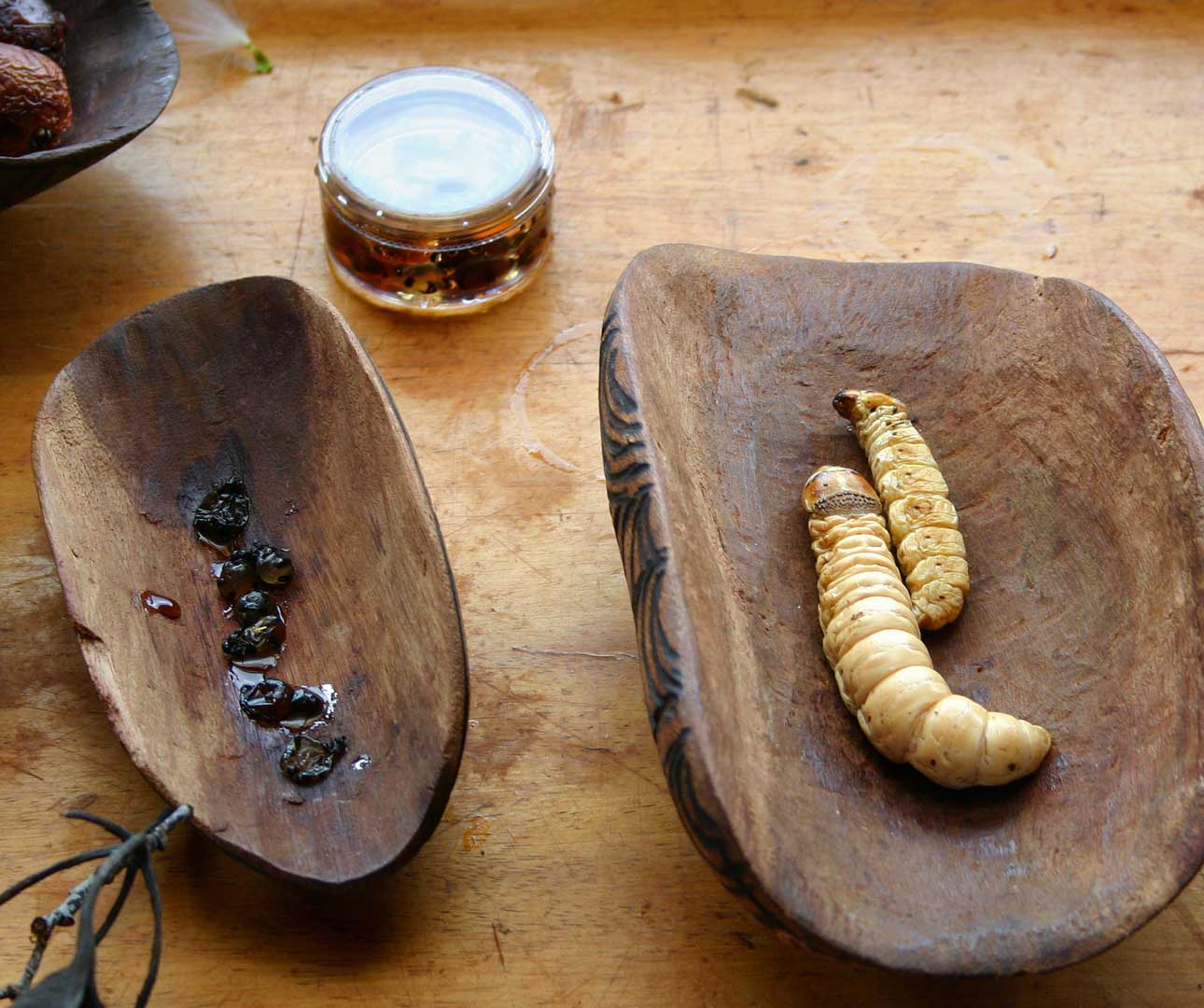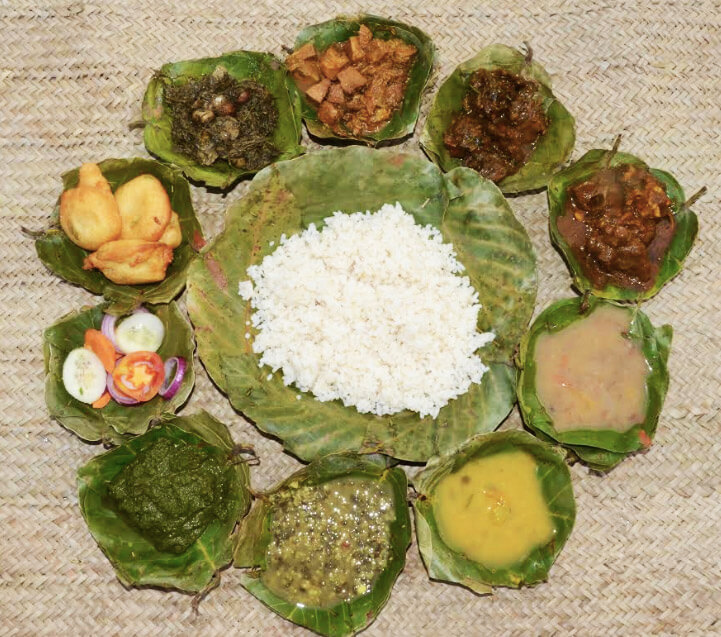A Taste of Tradition: Exploring the Rich History and Diversity of Aboriginal Food
A Taste of Tradition: Exploring the Rich History and Diversity of Aboriginal Food

For millennia, Aboriginal Australians have thrived on a diet rich in flavor, cultural significance, and nutritional value. This ancient culinary tradition, deeply intertwined with the land and its bounty, offers a unique perspective on food and sustainability. This article delves into the fascinating world of Aboriginal food, exploring its history, diversity, modern-day revival, and the vital role it plays in preserving cultural identity.
A Legacy of Sustainability: The Bush Tucker Tradition
Related Articles: A Taste of Tradition: Exploring the Rich History and Diversity of Aboriginal Food
- Beyond The Bounce: Uncovering The Aboriginal Meaning Of "Kangaroo"
- Totem Animals: Connecting Indigenous Australians To The Land And Beyond
- Brisbane’s First People: Uncovering The Legacy Of The Jagera And Turrbal
- Unveiling The Emerald Gem: A Guide To The Delicious And Versatile Finger Lime
- The Dreamtime: Unveiling The Heart Of Aboriginal Culture
Aboriginal food, often referred to as "bush tucker," encompasses a vast array of plants, animals, and fungi sourced from the Australian landscape. This traditional diet is not simply about sustenance; it’s a complex system of knowledge, respect, and connection to the land.
A Diverse Culinary Landscape:
The sheer diversity of Aboriginal food is remarkable, reflecting the vast and varied ecosystems across Australia. From the arid deserts of the interior to the lush rainforests of the east coast, each region boasts its own unique culinary treasures:
- Plants: A staple of the Aboriginal diet, plants like native fruits (quandong, Davidson plum, finger lime), seeds (bush tomato, saltbush), roots (yam, lily), and leafy greens (warrigal greens, pigweed) provide a spectrum of flavors and nutrients.
- Animals: From kangaroo and emu to freshwater fish, shellfish, and insects, Aboriginal people have long utilized the abundance of the land and sea.
- Fungi: Native mushrooms like the "bush button" and "puffball" add unique textures and flavors to the Aboriginal palate.

Beyond the Plate: The Cultural Significance of Food
Aboriginal food is more than just nourishment; it’s a powerful symbol of cultural identity, connection to the land, and spiritual practices.
- Traditional Knowledge: The knowledge of identifying, harvesting, and preparing bush tucker has been passed down through generations, forming a vital part of Aboriginal cultural heritage.
- Respect for the Land: Aboriginal people have a deep understanding of the delicate balance of the natural world, ensuring sustainable harvesting practices and respecting the land’s resources.
- Ceremonial Practices: Food plays a crucial role in many Aboriginal ceremonies, symbolizing community, connection, and the celebration of life.

The Modern Revival of Aboriginal Food
In recent years, there has been a growing interest in reviving and celebrating Aboriginal food. This resurgence is driven by a desire to:
- Preserve Cultural Heritage: By promoting and sharing traditional knowledge, the younger generation can connect with their cultural roots.
- Showcase Culinary Diversity: The unique flavors and textures of Aboriginal food offer a fresh perspective on Australian cuisine.
- Promote Sustainable Practices: The traditional methods of harvesting and utilizing resources provide valuable insights into ecological sustainability.

Challenges and Opportunities:
While the revival of Aboriginal food is encouraging, several challenges remain:
- Loss of Traditional Knowledge: The impact of colonization and forced assimilation has led to the loss of traditional knowledge and practices, making it difficult for some communities to access and utilize bush tucker.
- Limited Access to Resources: The availability of traditional foods can be affected by factors like land ownership, climate change, and invasive species.
- Market Accessibility: The commercialization of Aboriginal food is still in its early stages, with limited availability in mainstream markets.
Opportunities for the Future:
Despite the challenges, the future of Aboriginal food is promising. There are several opportunities for growth and development:
- Education and Awareness: Raising awareness about the importance of Aboriginal food and its cultural significance through educational programs and public events.
- Community Partnerships: Collaborating with Aboriginal communities to support sustainable harvesting practices and promote traditional knowledge.
- Food Tourism: Developing food tourism experiences that showcase the unique flavors and cultural significance of Aboriginal cuisine.
- Research and Innovation: Exploring the nutritional and medicinal properties of Aboriginal food through research and development.
FAQ: Exploring Aboriginal Food
1. What are some common Aboriginal foods?
Some common Aboriginal foods include:
- Fruits: Quandong, Davidson plum, finger lime, native peach, riberry, bush tomato, and Kakadu plum.
- Seeds: Bush tomato, saltbush, wattle seed, and native spinach.
- Roots: Yam, lily, and fern root.
- Leafy Greens: Warrigal greens, pigweed, and native spinach.
- Animals: Kangaroo, emu, fish, shellfish, and insects (witchetty grubs, honey ants).
- Fungi: Bush button, puffball, and native mushrooms.
2. How are Aboriginal foods prepared?
Aboriginal foods are prepared using a variety of traditional methods, including:
- Roasting: Over coals or in the ashes.
- Boiling: In water or using hot stones.
- Smoking: To preserve and enhance flavor.
- Grinding: To create flour or paste.
- Drying: To preserve for later use.
3. Where can I find Aboriginal food?
You can find Aboriginal food at:
- Indigenous-owned businesses: Restaurants, cafes, and markets.
- Specialty stores: Carrying native ingredients and products.
- Farmers markets: Where Aboriginal producers sell their wares.
- Online retailers: Offering a variety of Aboriginal food products.
4. How can I support the revival of Aboriginal food?
You can support the revival of Aboriginal food by:
- Trying Aboriginal foods: Explore new flavors and support indigenous businesses.
- Learning about Aboriginal culture: Educate yourself about the history and significance of Aboriginal food.
- Sharing your knowledge: Tell others about the importance of preserving Aboriginal food traditions.
- Supporting Aboriginal-owned businesses: Patronize indigenous restaurants, cafes, and markets.
5. Is Aboriginal food safe to eat?
Aboriginal foods are generally safe to eat, but it’s important to:
- Source your food from reputable sources: Ensure you are buying from trusted suppliers.
- Learn about the proper preparation methods: Some native foods require specific preparation techniques.
- Be aware of potential allergies: Certain native foods can cause allergic reactions in some people.
Conclusion:
The story of Aboriginal food is a testament to the resilience, ingenuity, and deep connection to the land that has defined Aboriginal culture for millennia. By embracing this rich culinary heritage, we can not only enjoy the unique flavors and textures of Aboriginal cuisine but also contribute to the preservation of a vital part of Australian cultural identity. As we move forward, let us continue to learn, appreciate, and celebrate the enduring legacy of Aboriginal food.

Closure
Thus, we hope this article has provided valuable insights into A Taste of Tradition: Exploring the Rich History and Diversity of Aboriginal Food. We thank you for taking the time to read this article. See you in our next article!


